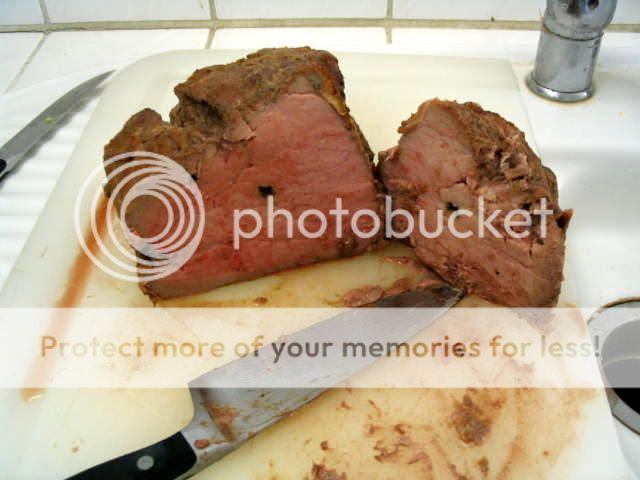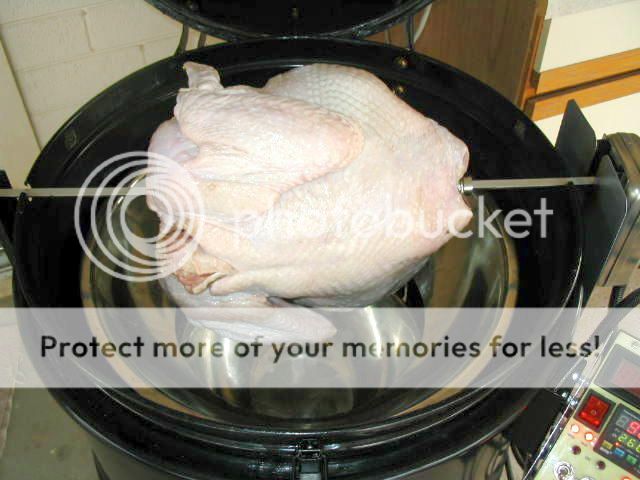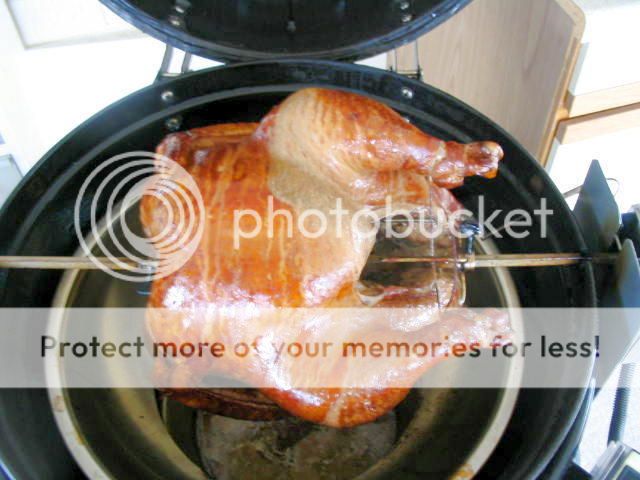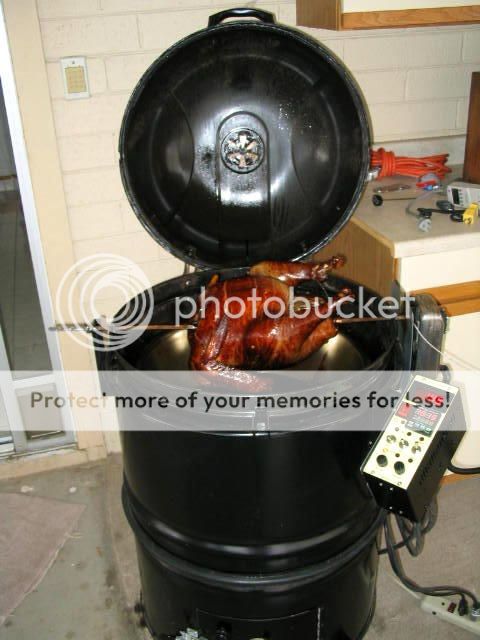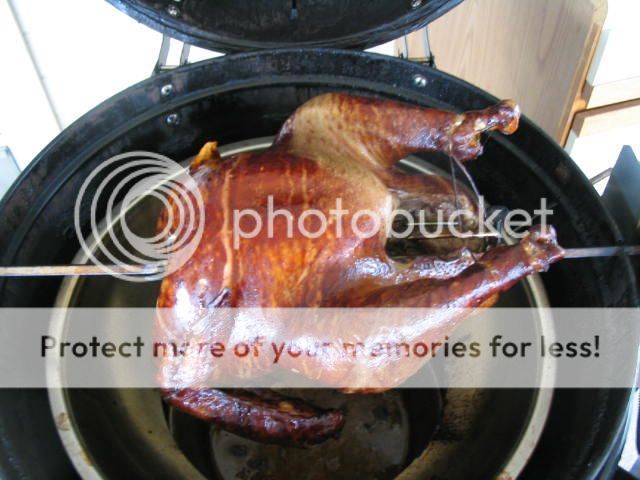UPDATE: Temp Tests And A Center Cut Chuck Roast
I found a 4-1/4 lb center cut chuck roast in the supermarket "manager's special" bin for $2.99/lb -- the "sell by" day was today. So I decided to use it for further testing -- its big enough to use the rotisserie.
First let me confess. I've studied how commercial meat processors prepare their meat for distribution to restaurants. They convert shoe leather into prime. It ain't pretty. But sometimes it's possible to selectively use these techniques. I've got a vacuum marinade machine for a quick marinade, even thought the marinade only penetrates 1/8 inch. I've also got a "needler" tool that pierces the meat so the marinade penetrates deeper. I also have a good syringe for injecting marinades deep inside the cut. For the center cut chuck roast I used the syringe.
The marinade had three ingredients: about one tablespoon of garlic powder, a tablespoon of MSG (do some research before you flame), and a half teaspoon of Bromelain, a meat tenderizer, all whisked up with water. Ordinarily I inject this along the tough areas of the cut, but on this roast it didn't matter much - not many tough areas. A tiny amount was injected about every couple square inches all around the roast, at varying depths. Keep in mind Bromelain can LIQUIFY meat so a tiny amount goes a **very** long way.
So here is how it went:
Time: 00:00: With the ambient temperature in the covered patio at about 94 deg, I plugged in the smoker, set the controller to 250 deg with both the main and aux burner set to follow the controller's output. The water pan was empty, and there was no lava rock installed.
Time: 00:08: Yes, eight minutes later the smoker was at 250 deg.
Time: 00:10: I poured about 3/4 gallon of water into the water/drip pan, I should have used half that. This was directly out of the hot water tap, probably around 110 deg. The inside temp dropped to 205 deg and the lid was closed.
Time: 00:14: Temp came back to 250 in about four minutes.
So basically, the smoker was up and running 15 minutes after it was turned on. I then put the rotisserie shaft with the roast loaded into the smoker and closed the top
Time: 00:19 Placed wood chip burner pan with two hand-fulls of soaked Mesquite chips through the bottom door on to the aux heating element Switched the aux heating element from the mode where it follows the on-off cycles of the main burner to fully "on" to make sure it gets enough heat to smoke. Takes a bit of time for the pan to warm up -- it has a thick combination of aluminum and stainless on the bottom. Will try to find a cheap thin one.
Time: 00:38 Starting to smell smoke. Takes some time.
Time: 00:44 Smoke coming out of the top vent in a steady stream. I switched the aux heating element back into the mode where it follows the on-off cycles of the main burner to see if the smoke will continue to smolder.
Time: 01:10 Water pan in a gentle boil. Smoke almost stopped after about 20 mins. Pulled the chip pan and the residue was about half white and half black ash. I'm thinking about using the pan lid that has adjustable vents on top to cut down the burn rate and let the smoke linger a bit longer. I turned the aux heating element off a this point.
For beef I don't like too much smoke. Just a hint is all it takes.
At this point I did a bunch of temperature tests. I've observed before that the water pan creates a "temp dead zone' between the water surface and the meat. This zone has high humidity but is low in temp. Around the circumference of the smoker the temp can be 250 but in the dead zone it can be 170. I think this is the characteristic of water smoking and the smoking time has to be adjusted accordingly. To confirm this I ramped up the temp to 300 deg and the dead zone only went up 8 degrees. It is a major variable so precise temp control with a water pan is really a challenge. I got another temp meter and dropped a separate thermocouple down through the top vent past the meat and the temp increased as the thermocouple went lower toward the water pan, then when pulled back up it decreased just below the meat, then increased just above the meat. So in addition to the meat acting as a heat sink, there is some goofy geometry involved in the heat gradients. Of course all this goes away (I think) when water is not used.
I checked the internal meat temp a few times and at about....
Time: 2:10 Internal meat temp was about 130. I reduced the smoker temp to 140 deg.
Time: 2:30 Meat temp getting close to 140 so I turned everything off and pulled the roast from the smoker, wrapped in foil and set aside for dinner.
Here is the result.
A perfectly tender hunk of prime rib usually has gobs and rivers of fat flowing through. This is what makes it "prime" as in tender and flavorful. But for me, I don't like the fat much. So the goal was to duplicate the "prime" without the fat. And get the tenderness and flavor with the "marinade" and the slow and low cooking process. The only thing missing is a char on the outside -- I'm too lazy.
Another benefit of low and slow, especially cutting the temp toward the end, is that the meat has about the same "done-ness" from inside to out.
So I cut 1/2 inch slabs off the chuck. If I closed my eyes it would be hard to tell the difference between the chuck and a slab of prime rib.
We Have The Technology.....
